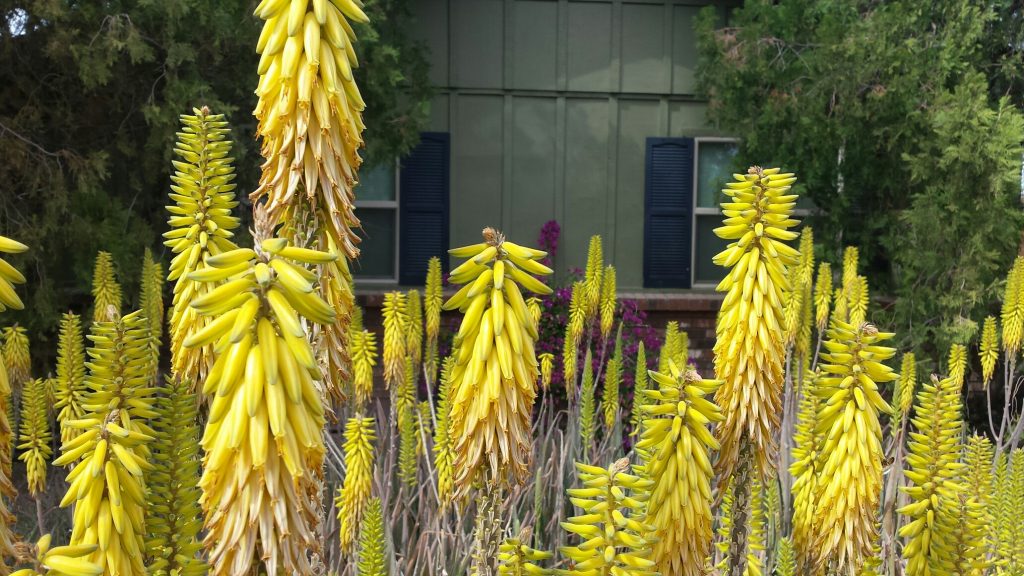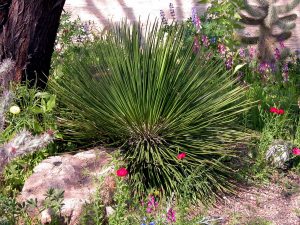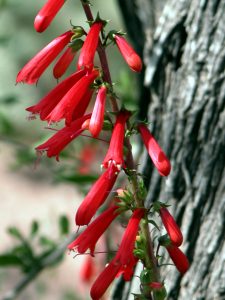As we all know, our desert cities are magnets for winter visitors, who are seduced by our balmy weather, manicured fairways, and bountiful recreational opportunities. Not surprisingly, they also expect their winter paradise to be landscaped with loads of COLOR!
This is always a challenge for landscape professionals because although our cold temperatures are mild compared to those across most of the country, they are low enough to prevent most ornamentals from blooming and looking their best. While many plants bloom profusely in the early fall and spring, the color options drop off drastically in the dead of winter. However, don’t despair! Although the list of winter-blooming plants is short (especially for our friends in high desert regions), you can enhance your garden by including plants with colorful foliage, and interesting shapes and textures. Combine some of the plants shown below, and your garden will be winter wonderful! (Note: the bloom periods given are for mild winters in low deserts.)
Winter Color with Flowers
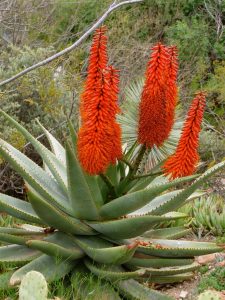
Aloes, Aloe species
These succulents from South Africa provide some of our best winter and early spring color. Ranging from small clumping groundcovers to tree-like accents, there are several species from which to choose. Hummingbirds are attracted to their yellow, orange or red tubular flowers. Aloes prefer light filtered shade, thriving under the canopy of desert trees such as mesquite and palo verde. Most aloes begin to suffer frost damage below 25º F.
Bulbine, Bulbine frutescens
Also a native of South Africa, this charming little succulent is a must for desert gardens. It forms a small clump to 18 inches tall by 2-3 feet across, with fleshy, bright green leaves that look good all year. Tall, delicate spikes of yellow flowers rise above the foliage in the winter and early spring. An orange-flowering selection is also available. Bulbine can be grown in full sun or filtered shade and is cold hardy to at least 15º F.
Indigo Bush, Dalea pulchra
Indigo bush is an Arizona native, so it’s no surprise that it thrives in full sun and reflected heat exposures. It also tolerates temperatures as low as 5º F.This evergreen shrub has an open, rounded growth form to 5 feet tall and wide. Its delicate silver foliage provides a striking contrast to the masses of violet flowers produced in the winter and early spring. Indigo bush is quite susceptible to over-watering, so plant it in well-drained soil and be careful not to kill it with kindness. The nectar-rich blossoms attract bees and butterflies.
Black Dalea, Dalea frutescens Sierra Negra™
Black dalea blooms in the late fall with masses of bright purple flowers. Evergreen in the Phoenix area, this shrub forms a rounded mound of grey-green foliage to 4 feet tall by 5 feet wide. Like Dalea pulchra, it needs full sun and is very tolerant of reflected heat. The bees cover this shrub during the bloom season.
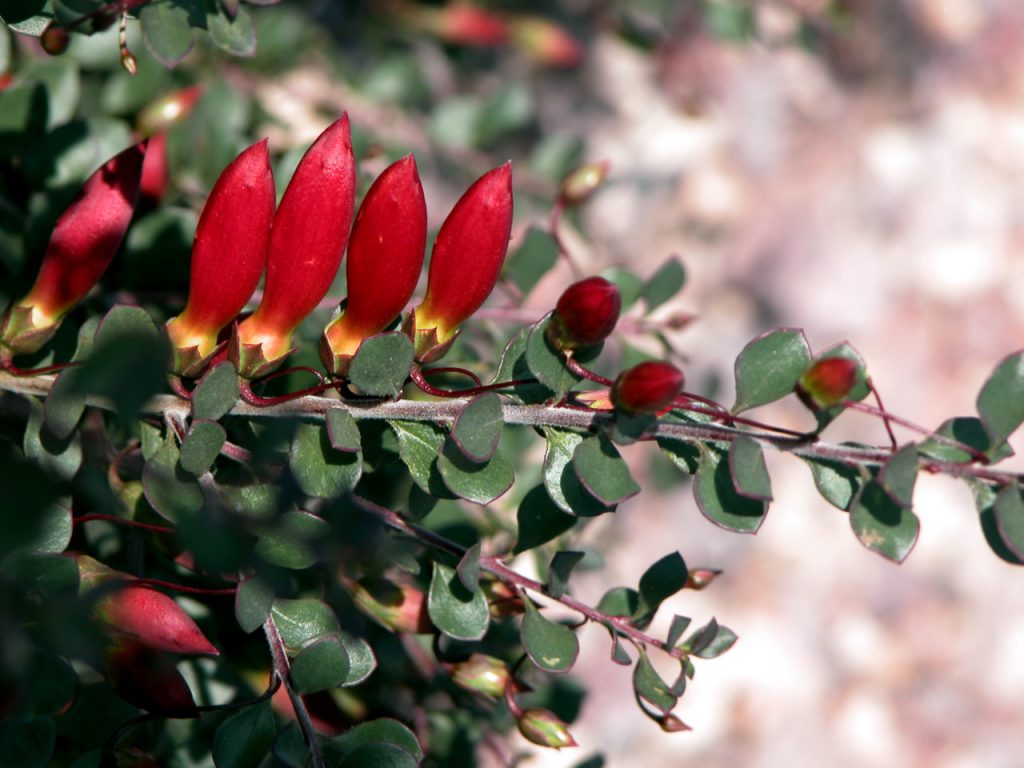
Valentine Emu Bush, Eremophila species Valentine™
Surprise your sweetheart by planting several of these incredible shrubs. Blooming begins in January, is in full swing by Valentine’s Day, and continues through March. The masses of tubular red flowers are truly spectacular. For the rest of the year, this evergreen shrub provides nice, deep green foliage and a dense, rounded form. Plant Valentine™ in full sun, and allow it plenty of room to develop, as it can quickly grow to 4 feet tall by 5 feet wide. It is cold hardy to the mid-20s F.
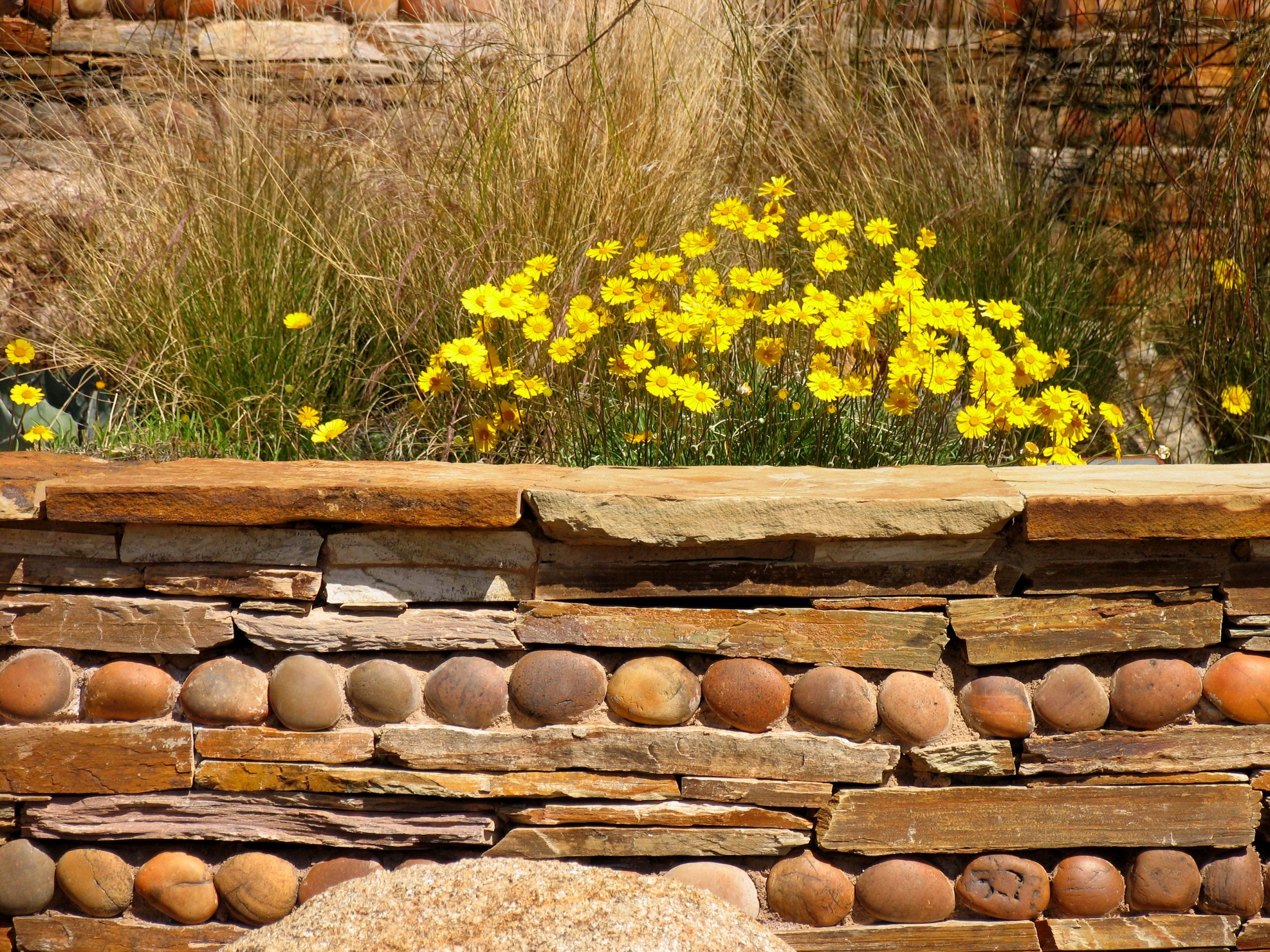
Angelita Daisy, Hymenoxys acaulis (reclassified to Tetraneuris acaulis)
Angelita daisy is one of the best perennials to plant for year ’round color. Although blooming slows down in the winter months, it can still be counted on to provide a splash of sunny yellow in the garden. Angelita daisy has slender, bright green leaves that form a clump to 10 inches tall by 15 to 18 inches wide. Daisy-like flowers are perched above the foliage on tall, leafless stems. Angelita daisy makes a great low border plant and should be planted in clusters or masses for the greatest impact. Plant in full sun, and be careful not to over water. Trim back spent flower spikes periodically to initiate new flower production and keep the plants looking fresh. Angelita daisy is cold hardy to 0° F.
Foliage Color & Texture
Desert Milkweed, Asclepias subulata
Don’t be misled by the unflattering common name of this terrific plant. Desert milkweed is a real winner! This unique plant has a strong vertical form, forming a 4-foot clump of leafless, flexible silver-grey stems. Unusual clusters of creamy yellow flowers crown each stem from spring through fall, attracting butterflies to the garden. Tuck desert milkweed in among boulders, interplant it with herbaceous shrubs and perennials or grow it in a container. This clean plant is also ideal for use around swimming pools Desert milkweed thrives in full sun and reflected heat, and needs good drainage. It is hardy to 23º F.
Wooly Butterfly Bush, Buddleja marrubiifolia
The soft, silvery foliage of wooly butterfly bush helps to liven up winter landscapes. Combine this rounded evergreen shrub with green-leafed plants for an interesting contrast. Wooly butterfly bush grows to 5 feet tall and wide, maintaining a dense form with little maintenance. It prefers full sun and well-drained soils and is hardy to at least 15º F.As an added bonus, its small orange flower balls attract butterflies in the spring and summer!
Gopher Plant, Euphorbia rigida
Strange and wonderful, this unusual shrub looks like something from another planet but is native to the Mediterranean. Its arching, spreading stems are lined with linear, fleshy grey-green leaves. Broad clusters of chartreuse flowers appear at the branch tips in late winter and early spring. This shrub can reach a mature size of 3 feet tall by 4 feet wide. After flowering and fruiting, the stems die back, leaving a clump of grey-green foliage near the ground. It is hardy to at least 5º F, and is tolerant of full sun and reflected heat exposures.
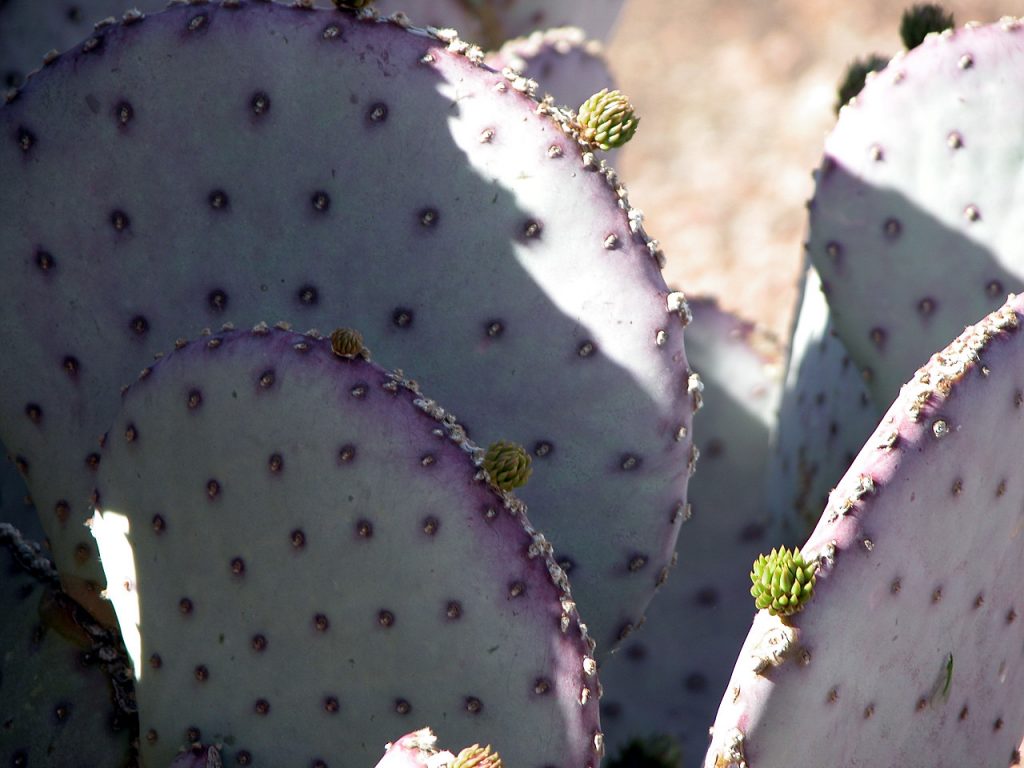
Purple Prickly Pear, Opuntia santarita Tubac™
Although this colorful cactus doesn’t show its yellow blossoms until late spring, the rich purple pads provide plenty of winter interest. Mix the purple prickly pear in with shrubs and perennials for a softer effect. It is quite spiny, so set it well back from high traffic areas. This plant will grow to 4 feet tall by 6 feet wide. Tubac™ needs full sun and is hardy to at least 15º F.
Other Plants for Winter Color and Interest
-

This Agave Geminiflora will produce a large flower stalk 8 to 12 feet tall after several years in the landscape. Agave species … For sculptural interest
- Caesalpinia cacalaco [reclassified as Tara cacalaco] (Cascalote) … Blooms in the winter with yellow flowers
- Calliandra californica (Red fairy duster) … Red blossoms in late fall, early spring
- Cassia oligophylla [reclassified as Senna artemisioides v. oligophylla] (Outback cassia) … Yellow flowers in late winter
- Dalea versicolor v. sessilis Mountain Delight™ … Purple flowers in late fall, early spring
- Dasylirion species … For sculptural interest
- Hesperaloe species … For sculptural interest
- Justicia californica (Chuparosa) … Tubular red flowers in late fall, early spring
- Justicia candicans (Red Justicia) … Orange-red flowers through the cool months
- Leucophyllum candidum Thunder Cloud™ … Silver foliage
-

Hummingbirds love the bright red, tubular flowers of the Firecracker Penstemon. Nolina species … For sculptural interest
- Penstemon eatonii (Firecracker Penstemon) … Red flowers in late winter, early spring
- Plumbago scandens Summer Snow™ … Foliage turns red in the winter
- Salvia clevelandii (Chaparral Sage) … Blue flowers in late fall, early spring
- Tagetes lemmonii (Mt. Lemmon marigold) … Intense yellow-orange flowers in late fall
and early spring - Yucca species … For sculptural interest
Be sure to check out our other Plants of the Month to find the perfect low-water-use plant for your landscape.
From time to time, Water – Use It Wisely features guest bloggers who write about topics related to water and water conservation. The author of this blog is Mountain States Wholesale Nursery, a wholesale plant nursery in Arizona. Mountain States strives to utilize desert-adapted plants to add beauty, color, and variety to Southwest landscapes.


